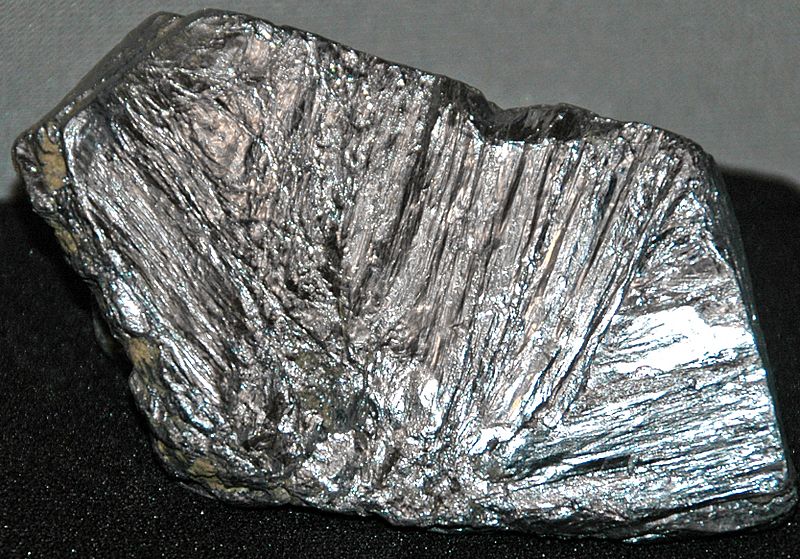Image: Molybdenite (Wolfram Camp, Dinbulah, Queensland, Australia) (19057113310)

Description: Molybdenite from the Late Paleozoic of Australia. A mineral is a naturally-occurring, solid, inorganic, crystalline substance having a fairly definite chemical composition and having fairly definite physical properties. At its simplest, a mineral is a naturally-occurring solid chemical. Currently, there are over 4900 named and described minerals - about 200 of them are common and about 20 of them are very common. Mineral classification is based on anion chemistry. Major categories of minerals are: elements, sulfides, oxides, halides, carbonates, sulfates, phosphates, and silicates. The sulfide minerals contain one or more sulfide anions (S-2). The sulfides are usually considered together with the arsenide minerals, the sulfarsenide minerals, and the telluride minerals. Many sulfides are economically significant, as they occur commonly in ores. The metals that combine with S-2 are mainly Fe, Cu, Ni, Ag, etc. Most sulfides have a metallic luster, are moderately soft, and are noticeably heavy for their size. These minerals will not form in the presence of free oxygen. Under an oxygen-rich atmosphere, sulfide minerals tend to chemically weather to various oxide and hydroxide minerals. Molybdenite is a molybdenum sulfide mineral (MoS2). It has hexagonal crystals, metallic luster, a bright silvery color, and a dark gray streak. It is fairly soft (H=2) and has one cleavage. Molybdenite is especially distinctive in being flexible - thin scales or plates of molybdenite will easily bend but won't snap back into shape like biotite or muscovite mica. Molybdenite is nearly identical to graphite (C) in its physical characteristics (see: www.flickr.com/photos/jsjgeology/sets/72157650963514503). Graphite is a principally a metamorphic mineral. Molybdenite is usually an igneous mineral, occurring in hydrothermal veins and pegmatites. It also occurs in some contact metamorphic rocks (skarns - www.flickr.com/photos/jsjgeology/sets/72157646562268189). The molybdenite sample shown above is from Wolfram Camp in Australia, where a quartz-rich molybdenite-wolframite-bismuth pipe occurs in altered roof zone rocks of the Elizabeth Creek Granite. The granite body contains pinkish monzogranites of Pennsylvanian to Early Permian age. Locality: Wolfram Camp, Dinbulah, northern Queensland, northeastern Australia Photo gallery of molybdenite: www.mindat.org/gallery.php?min=2746
Title: Molybdenite (Wolfram Camp, Dinbulah, Queensland, Australia) (19057113310)
Credit: Molybdenite (Wolfram Camp, Dinbulah, Queensland, Australia)
Author: James St. John
Usage Terms: Creative Commons Attribution 2.0
License: CC BY 2.0
License Link: http://creativecommons.org/licenses/by/2.0
Attribution Required?: Yes
Image usage
The following page links to this image:

